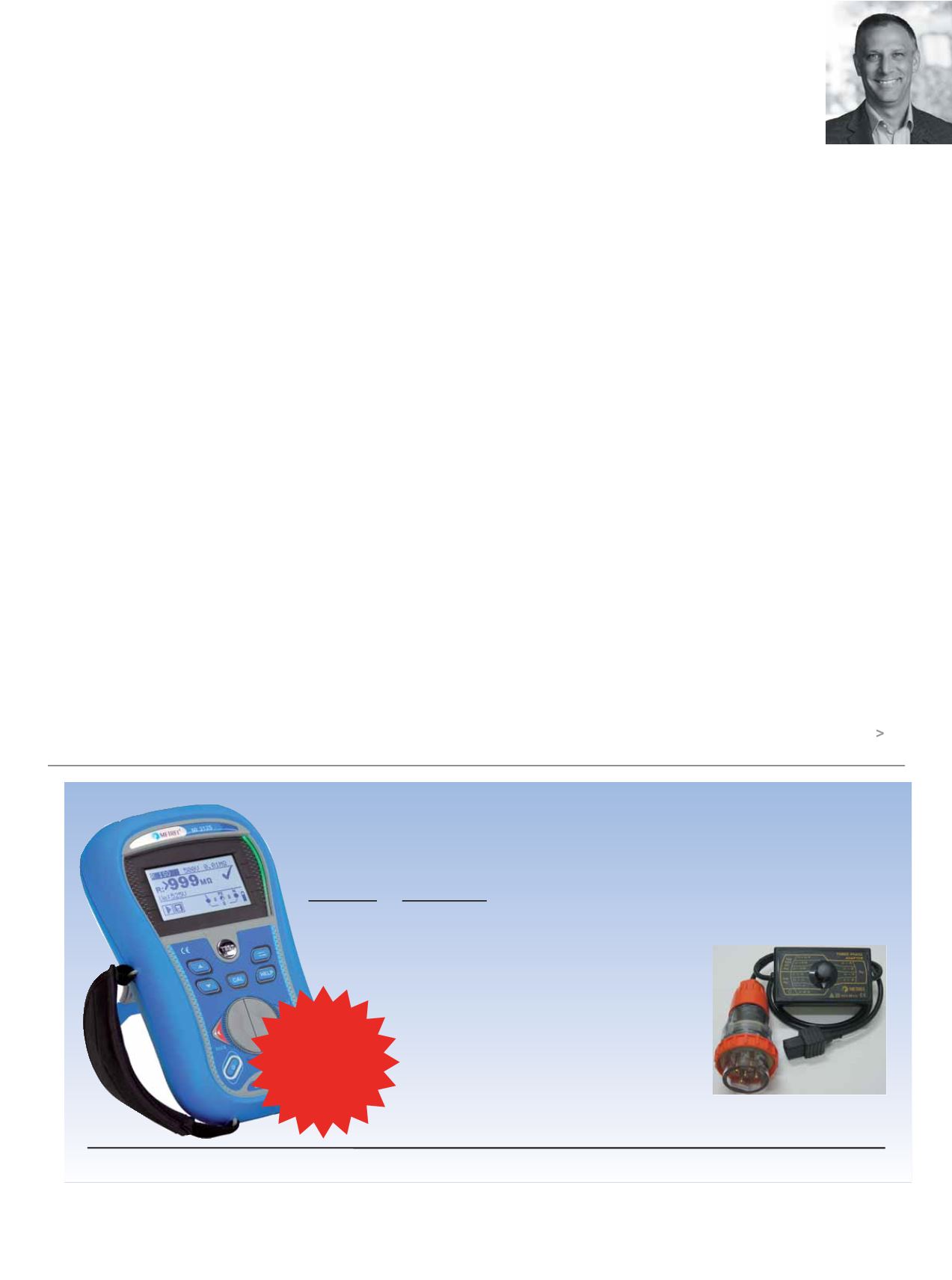

www. e l e c t r i c a l c o nn e c t i o n . c om . a u
5 9
with
Steve Arthur
specifying a light fixture that you are
looking at the appropriate fixture data
versus the LED source data.
>
Lifetime:
For traditional lighting sources,
lifetime is reported as ‘mean time to
failure’, which means the average time
it takes for some percentage of lamps
(usually 50%) to fail completely. With
an LED source, light output diminishes
gradually. So for LED sources, lifetime
translates to how long a lighting fixture
retains a certain percentage of its initial
light output, which is also called lumen
maintenance. The lifetimes of LED
sources and traditional light sources
are defined differently. For white LEDs,
lifetime is referred to as the time after
which usually 70% of the original light
output remains, not when the source has
completely burnt out.
>
Directionality:
LEDs are directional
sources. Traditional light sources emit
light in all directions. In order to collect
light and direct it onto the surface you
are trying to illuminate, you must use
lenses and reflectors, which absorb
light and reduce the total output of
the fixture. Given an LED source is
already emitting the majority of light
in a defined direction, it requires
significantly less beam shaping optics,
leading to a more efficient light fixture.
A traditional source may produce
more lumens than an LED source, but
it may lose much of its light when
passing through the required optics.
It is therefore important to consider
total illuminance, measured in lux,
when making comparisons between
light fixtures.
>
Correlated Colour Temperature
(CCT):
CCT indicates the relative colour
appearance of a white light source, from
yellowish-white or ‘warm’ (2,700-3,000K)
to bluish-white or ‘cool’ (5,000K+).
Certain light sources are associated
with particular colour temperatures.
LED fixtures come in a variety of fixed
colour temperatures, making them easy
to replace or combine with current light
sources. Some LED fixtures also provide
a range of colour temperatures within a
single fixture.
>
Colour Rendering Index (CRI):
CRI is a
measure of the ability of a light source to
render colours, compared to a reference
source (incandescent1 or daylight), on
a scale of up to 100, with 100 being
identical to the reference source. What’s
important to remember is the higher
the CRI, the better the fixture’s ability to
show true colours.
LED BUYERS GUIDE
With there being so many opportunities
for contractors to capitalise on advances in
LED technology, in addition to the basics,
it is worthwhile revisiting key questions
that all contractors should consider before
specifying or purchasing LED lighting.
This is to ensure any solution best meets
your requirements and importantly, your
customers’ requirements.
The following Q&A serves as a guide to
help you get the best quality and most
appropriate fixture for each application.
Q: How does the manufacturer define
lifetime? How is it measured?
A: For LED sources, light output diminishes
over time, and lifetime typically refers to
InstalTest Combo
Call
EMONA
on tel: 1 800 632 953, email:
testinst@emona.com.auor
www.instaltest.com.auInstalTest
COMBO 3125
$999
ex GST
Single & 3 Phase Multi-Function Tester for All Your
Electrical Installation Testing and Verification.
Replaces 5 instruments with 12 tests in
one instrument.
Single & 3 phase installation testing to
AS/NZS3017 covering earth continuity,
insulation resistance, polarity, correct
connections, fault loop impedance and
RCD testing.
Optional 3 phase adaptors for safe, quick
and reliable 3 phase testing from the 3
phase socket outlet - no need for probing!
Optional MI-TPI for 3 phase
testing of RCDs, fault loop etc.
















